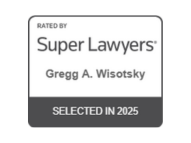 We set aside one day every year to give thanks, but here at Law Offices of Gregg A. Wisotsky, we are thankful throughout the year for the relationships that we have built with our clients. We value your trust and your confidence, and we are committed to helping you achieve your goals.
We set aside one day every year to give thanks, but here at Law Offices of Gregg A. Wisotsky, we are thankful throughout the year for the relationships that we have built with our clients. We value your trust and your confidence, and we are committed to helping you achieve your goals.
We hope that this holiday gives you a chance to reflect on treasured memories and cherished relationships. Happy Thanksgiving!




 According to statistics gathered by the National Highway Traffic Safety Administration, there was a significant increase in motorcycle-related deaths from 2014 to 2015 and the annual number of fatalities has remained at the higher level in subsequent years. Officials say the increase is primarily the result of cheaper gasoline costs, which put more people on the road for longer periods of time.
According to statistics gathered by the National Highway Traffic Safety Administration, there was a significant increase in motorcycle-related deaths from 2014 to 2015 and the annual number of fatalities has remained at the higher level in subsequent years. Officials say the increase is primarily the result of cheaper gasoline costs, which put more people on the road for longer periods of time. Under the laws of the state of New Jersey, it is illegal to produce, possess, sell of distribute any pornographic image that portrays or exploits someone under the age of 18. In fact, there are state and federal laws that lead to serious penalties for involvement in child pornography operations. In New Jersey, for example, it’s considered endangering the welfare of children to photograph or take footage of a minor in a proscribed sexual act, or simulating a prohibited act. The law forbids any attempt to convey those images to another person, including digital transmissions.
Under the laws of the state of New Jersey, it is illegal to produce, possess, sell of distribute any pornographic image that portrays or exploits someone under the age of 18. In fact, there are state and federal laws that lead to serious penalties for involvement in child pornography operations. In New Jersey, for example, it’s considered endangering the welfare of children to photograph or take footage of a minor in a proscribed sexual act, or simulating a prohibited act. The law forbids any attempt to convey those images to another person, including digital transmissions. When you’ve been pulled over by law enforcement officers in New Jersey, you can be almost certain that the first question you’ll face is some variation of “have you had any alcoholic beverages today?” If your answer is yes, or if the officer has any reasonable suspicion that you may be impaired, the next step will typically involve some type of field sobriety test, so that the officer can either establish probable cause to administer a blood alcohol test or send you on your way.
When you’ve been pulled over by law enforcement officers in New Jersey, you can be almost certain that the first question you’ll face is some variation of “have you had any alcoholic beverages today?” If your answer is yes, or if the officer has any reasonable suspicion that you may be impaired, the next step will typically involve some type of field sobriety test, so that the officer can either establish probable cause to administer a blood alcohol test or send you on your way. When you’ve been hurt by the careless or wrongful act of another person, you have a right to seek compensation for your losses. But what if that person is what the law considers “judgment proof”? For example, what if you were injured by a person who has no insurance and who has no assets. You may be able to get a verdict, but have little hope of ever collecting on that judgment.
When you’ve been hurt by the careless or wrongful act of another person, you have a right to seek compensation for your losses. But what if that person is what the law considers “judgment proof”? For example, what if you were injured by a person who has no insurance and who has no assets. You may be able to get a verdict, but have little hope of ever collecting on that judgment.


 When a loved one dies because of the carelessness or negligence of another person, it can have devastating emotional and financial consequences. No amount of money can bring your loved one back, but you may be entitled to compensation for your losses. But can anyone who has experienced emotional trauma because of the wrongful death of another person seek damages in a court of law? If not, what are the requirements to qualify to file a wrongful death action?
When a loved one dies because of the carelessness or negligence of another person, it can have devastating emotional and financial consequences. No amount of money can bring your loved one back, but you may be entitled to compensation for your losses. But can anyone who has experienced emotional trauma because of the wrongful death of another person seek damages in a court of law? If not, what are the requirements to qualify to file a wrongful death action?








